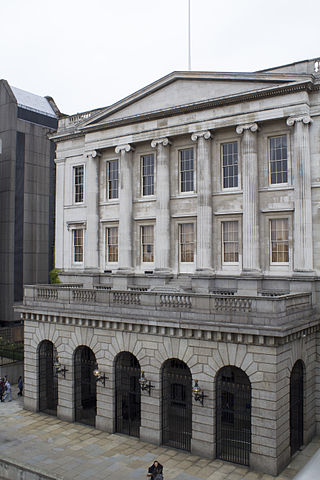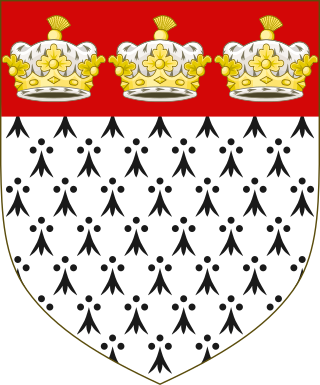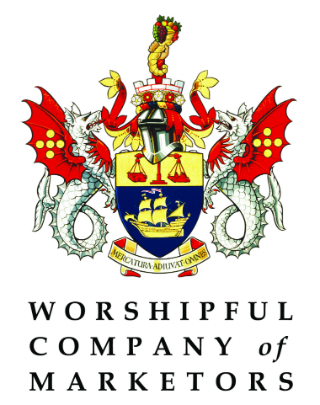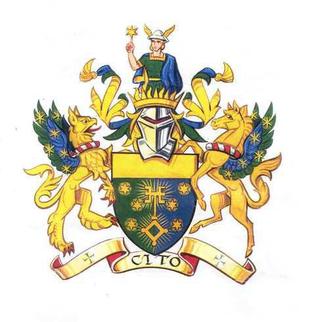
Games of patience, or (card) solitaires as they are usually called in North America, have their own 'language' of specialised terms such as "building down", "packing", "foundations", "talon" and "tableau". Once learnt they are helpful in describing, succinctly and accurately, how the games are played. Patience games are usually for a single player, although a small number have been designed for two and, in rare cases, three or even four players. They are games of skill or chance or a combination of the two. There are three classes of patience grouped by object.

An ace is a playing card, die or domino with a single pip. In the standard French deck, an ace has a single suit symbol located in the middle of the card, sometimes large and decorated, especially in the case of the ace of spades. This embellishment on the ace of spades started when King James VI of Scotland and I of England required an insignia of the printing house to be printed on the ace of spades. This insignia was necessary for identifying the printing house and stamping it as having paid the new stamp tax. Although this requirement was abolished in 1960, the tradition has been kept by many card makers. In other countries the stamp and embellishments are usually found on ace cards; clubs in France, diamonds in Russia, and hearts in Genoa because they have the most blank space.

There are 111 livery companies, comprising London's ancient and modern trade associations and guilds, almost all of which are styled the "Worshipful Company of" their respective craft, trade or profession. These livery companies play a significant part in the life of the City, not least by providing charitable-giving and networking opportunities. Liverymen retain voting rights for the senior civic offices, such as the Lord Mayor, Sheriffs and Common Council of the City Corporation, London's ancient municipal authority with extensive local government powers.
The Worshipful Company of Scriveners is one of the 111 livery companies of the City of London. The Scriveners Company was originally known as the Mysterie of the Writers of the Court Letter and, since its incorporation, as Master Wardens and Assistants of the Company of Scrivenors of the Cittie of London [sic]. It is one of the few livery companies that from its foundation to the present day has been influential in setting the standards for a living profession, namely that of scrivener notary. The company's first ordinances were granted in 1373. Its royal charter was granted by King James I on 28 January 1617.

The Worshipful Company of Skinners is one of the Livery Companies of the City of London. It was originally an association of those engaged in the trade of skins and furs. It was granted Royal Charter in 1327.

The Worshipful Company of Butchers is one of the Livery Companies of the City of London, England. Records indicate that an organisation of butchers existed as early as 975; the Butchers' Guild, the direct predecessor of the present Company, was granted the right to regulate the trade in 1331. The Butchers' Guild was incorporated by Royal Charter centuries later, in 1605. The Butchers' still, unlike other Livery Companies, continues to exist as a trade association for members of the industry, instead of evolving into an institution primarily dedicated to charity. However, the Company does contribute, like all Livery Companies, to various charities.

The Worshipful Company of Saddlers is one of the Livery Companies of the City of London. A Guild of Saddlers, the Company's predecessor, is thought to have been an Anglo-Saxon Craft Guild – it certainly existed at some point in the eleventh century. The Guild became a Company when a Royal Charter of Incorporation was granted by King Edward III in 1363. The City granted the Company the right to regulate the trade of saddle-making; all saddlers in and within two miles of the City were subject to the Company's regulations. However, the powers of the Company, which has existed on the same site at Cheapside since 1160, were eroded over time.
The Worshipful Company of Glovers is one of the Livery Companies of the City of London. Glovers were originally classified as Cordwainers, but eventually separated to form their own organization in 1349. They received a Royal Charter of incorporation in 1639. The company is, as are most other Livery Companies, a charitable body, but it still retains close links to its original trade. Whilst traditional glove making has largely moved offshore there are still specialist UK companies engaged in the design, development, importation and distribution of technical, military, medical and industrial gloves as well as fashion companies making or distributing dress gloves in the UK and for export markets. A ceremonial link is still maintained; the Company formally presents the Sovereign with gloves upon his or her coronation.

The Worshipful Company of Upholders is one of the Livery Companies of the City of London. "Upholder" is an archaic word for "upholsterer". In past times upholders carried out not just the manufacture and sale of upholstered goods but were cabinet makers, undertakers, soft furnishers, auctioneers and valuers. The organisation was formed on 1 March 1360 and officially incorporated by a Royal Charter granted by Charles I in 1626. The Company originally had the right to set standards for upholstery within London, and to search, seize and destroy defective upholstery. However, over the years, the Company's power has eroded, as has the profession of upholsterers, because of the advancement of technology.
The Worshipful Company of Scientific Instrument Makers is one of the 110 livery companies of the City of London. It ranks 84th in the order of precedence for the livery companies.

The Worshipful Company of Marketors is one of the 110 livery companies of the City of London. The company was founded in 1975.

The Ace of Spades is traditionally the highest and most valued card in the deck of playing cards in English-speaking countries. The actual value of the card varies from game to game.


The standard 52-card deck of French-suited playing cards is the most common pack of playing cards used today. In English-speaking countries it is the only traditional pack used for playing cards; in many countries of the world, however, it is used alongside other traditional, often older, standard packs with different suit systems such as those with German-, Italian-, Spanish- or Swiss suits. The most common pattern of French-suited cards worldwide and the only one commonly available in English-speaking countries is the English pattern pack. The second most common is the Belgian-Genoese pattern, designed in France, but whose use spread to Spain, Italy, the Ottoman Empire, the Balkans and much of North Africa and the Middle East. In addition to those, there are other major international and regional patterns including standard 52-card packs, for example, in Italy that use Italian-suited cards. In other regions, such as Spain and Switzerland, the traditional standard pack comprises 36, 40 or 48 cards.

The Royal Flush Gang is a group of supervillains appearing in DC Comics. The group, which debuted in Justice League of America #43, use a playing card theme. Their code names are based on the cards needed to form a royal flush in poker: Ace, King, Queen, Jack, and Ten. Joker occasionally affiliates himself with the gang, but is not a consistent member. The group returned to battle the Justice League of America many times, and also appeared in other comics, including Wonder Woman, Formerly Known as the Justice League and Superman. The group has been described as "some of the most original villains of their time".

Spades form one of the four suits of playing cards in the standard French deck. It has the same shape as the leaf symbol in German-suited cards but its appearance is more akin to that of an upside down black heart with a stalk at its base. It symbolises the pike or halberd, two medieval weapons.
Clag is a trick-taking card game using a standard pack of 52 French-suited playing cards. It is similar to Oh Hell, and can be played by three to seven players. Clag originated in the Royal Air Force and started as an acronym for Clouds Low Aircraft Grounded.

German-suited playing cards are a very common style of traditional playing card used in many parts of Central Europe characterised by 32- or 36-card packs with the suits of Acorns, Leaves, Hearts and Bells. The German suit system is one of the oldest, becoming standard around 1450 and, a few decades later, influencing the design of the now international French suit system of Clubs, Spades, Hearts and Diamonds. Today German-suited playing cards are common in south and east Germany, Austria, German-speaking Switzerland, Liechtenstein, north Italy, Hungary, Czech Republic, Slovakia, Slovenia, Croatia, Bosnia, northern Serbia, southern Poland and central and western Romania.

French-suited playing cards or French-suited cards are cards that use the French suits of trèfles, carreaux, cœurs, and piques. Each suit contains three or four face/court cards. In a standard 52-card deck these are the valet, the dame, and the roi (king). In addition, in Tarot packs, there is a cavalier (cavalier) ranking between the queen and the jack. Aside from these aspects, decks can include a wide variety of regional and national patterns, which often have different deck sizes. In comparison to Spanish, Italian, German, and Swiss playing cards, French cards are the most widespread due to the geopolitical, commercial, and cultural influence of France, the United Kingdom, and the United States in the 19th and 20th centuries. Other reasons for their popularity were the simplicity of the suit insignia, which simplifies mass production, and the popularity of whist and contract bridge. The English pattern of French-suited cards is so widespread that it is also known as the International or Anglo-American pattern.
Richard Harding was a British forger. He was capitally indicted and convicted of the forgery of brass duty legal stamps placed on the Ace of Spades and the selling and uttering of playing cards with the same, while knowing such duty stamp to be false. He was hanged at the Old Bailey, London, England in 1805.
















